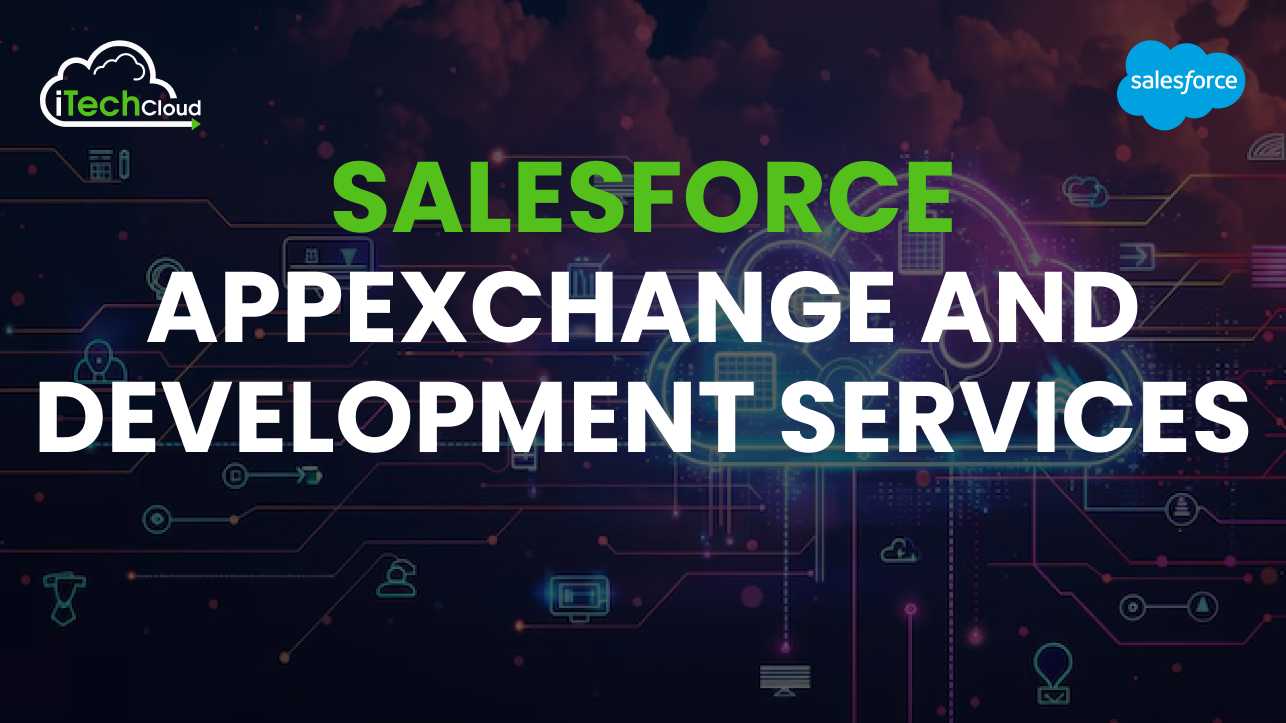Salesforce AppExchange is the world’s leading marketplace for business applications, offering a wide range of solutions that extend the capabilities of Salesforce products. Developers can create custom apps, components, and integrations that enhance Salesforce’s core functionality, making it a dynamic and ever-growing ecosystem. In this blog, we will delve into the process of Salesforce AppExchange app development, covering key topics such as development best practices, tools, and tips for successfully building and deploying apps on the AppExchange.
What is Salesforce AppExchange?
Salesforce AppExchange is an online marketplace that allows businesses to find, try, and buy third-party applications that integrate seamlessly with Salesforce. These applications include pre-built solutions designed to extend Salesforce’s functionality in various areas such as sales, marketing, service, and analytics. The marketplace hosts thousands of apps ranging from simple tools to enterprise-level solutions.
The AppExchange is a valuable resource for businesses looking to enhance their Salesforce instance without reinventing the wheel. For developers, it provides an opportunity to reach a vast global audience and solve real-world business problems with innovative solutions.
Why Develop an App for AppExchange?
There are several reasons why developing an app for Salesforce AppExchange can be beneficial:
- Access to a Large Customer Base: Salesforce has a global customer base, and AppExchange is the go-to marketplace for these users. Developers can tap into this extensive network to promote their apps and grow their businesses.
- Seamless Integration with Salesforce: Apps built for AppExchange are designed to work natively with Salesforce, ensuring smooth integration with its platform and other tools like Sales Cloud, Service Cloud, and Marketing Cloud.
- Revenue Opportunities: AppExchange apps are monetized either through a subscription model, one-time purchases, or freemium models. Developers have the chance to generate significant revenue while contributing to the Salesforce ecosystem.
- Enhancing Salesforce Capabilities: Developers can create apps that solve unique problems or provide new functionalities, thereby improving the user experience for Salesforce customers and helping organizations maximize their Salesforce investments.
Key Steps for Salesforce AppExchange App Development
Developing an app for AppExchange requires a combination of technical expertise, an understanding of Salesforce’s platform, and following best practices to ensure that the app is functional, secure, and compliant with Salesforce standards. Below is a step-by-step guide to developing an app for AppExchange.
1. Understanding the AppExchange Audience
Before diving into app development, it’s essential to understand the users who will be using the app. Salesforce users come from various industries, including finance, healthcare, manufacturing, retail, and more. They are looking for solutions that solve specific business challenges. Therefore, developers should focus on creating apps that are tailored to real-world business needs, are user-friendly, and provide a tangible value.
2. Choose the Right App Type
Salesforce offers various app types for developers, including:
- Lightning Web Components (LWC): These are modern, reusable components built using the latest web standards, such as JavaScript and HTML.
- Apex-Based Apps: Apex is Salesforce’s proprietary programming language used to write business logic, triggers, and controllers.
- Visualforce Pages: Visualforce is a framework that allows developers to build custom user interfaces, though it is being phased out in favor of LWC.
- Salesforce Functions: These are event-driven, serverless functions that allow you to run business logic outside of Salesforce’s core platform.
- Managed Packages: Managed packages are the key to distributing apps on AppExchange. They contain your app’s components, metadata, and configurations packaged together for distribution.
3. App Design and Architecture
When designing your app, focus on creating a solution that integrates well with Salesforce’s data model and user experience. The architecture should be modular, scalable, and secure, leveraging Salesforce’s out-of-the-box features and functionality as much as possible.
- Data Model: Ensure your app integrates smoothly with Salesforce objects (Standard and Custom) and respects the Salesforce data model to avoid conflicts with existing data structures.
- User Interface (UI): A seamless and intuitive UI is crucial for user adoption. Consider using Lightning Design System (LDS) to ensure that your app’s UI follows Salesforce’s design guidelines.
- Security: Salesforce has stringent security requirements, especially concerning data privacy and protection. Make sure that your app adheres to Salesforce’s security standards, including secure authentication, data encryption, and secure API usage.
4. App Development Tools and Technologies
Salesforce provides a variety of tools and technologies to aid in app development:
- Salesforce DX: Salesforce DX is a set of tools designed to improve the development lifecycle, including source control, automated testing, and continuous integration. It helps streamline the process of building, testing, and deploying apps.
- Salesforce CLI: The Salesforce Command Line Interface (CLI) is a powerful tool for developers that allows them to interact with Salesforce directly through the command line, enabling quick deployment and management of their apps.
- Visual Studio Code (VS Code): This is the recommended Integrated Development Environment (IDE) for Salesforce development. With the Salesforce Extension Pack, VS Code provides advanced features like code completion, debugging, and deployment.
- Trailhead: Salesforce’s learning platform, Trailhead, offers various modules and resources for developers. It’s an invaluable tool for learning how to develop and deploy apps on AppExchange.
5. Packaging and Publishing Your App
Once your app is developed and tested, the next step is to package it for AppExchange. Here’s how to go about it:
- Create a Managed Package: A managed package is a container for your app, and it is what you’ll submit to AppExchange. Ensure that all components, such as Apex classes, Visualforce pages, Lightning components, and custom objects, are included in the package.
- AppExchange Listing: To publish your app on AppExchange, you need to create a detailed listing that includes a description, screenshots, pricing details, and a user guide. This is where potential customers will first learn about your app, so make sure the listing is clear, informative, and appealing.
- Security Review: All apps on AppExchange must undergo a security review by Salesforce. This review checks for security vulnerabilities and compliance with Salesforce’s security guidelines. If your app passes, it will be listed on the marketplace.
- AppExchange Certification: While not mandatory, certifying your app on AppExchange can enhance its credibility and trustworthiness among users. Salesforce offers various certifications that can boost your app’s reputation.
6. Post-Launch Activities
Once your app is live on AppExchange, your work is far from over. Continuous support, updates, and user feedback are crucial to ensuring your app’s long-term success:
- Support and Maintenance: Regular updates to fix bugs, improve functionality, and add new features are essential. Offering excellent customer support through documentation, user forums, or a dedicated support team can significantly enhance your app’s reputation.
- User Feedback: Actively engage with users, gather feedback, and make improvements. Positive user reviews can significantly impact your app’s visibility and success on AppExchange.
- Marketing: Promoting your app on social media, blogs, webinars, and other platforms can drive more traffic to your AppExchange listing. Salesforce also provides marketing tools like AppExchange Listings and Salesforce Communities to help you reach a broader audience.
7. AppExchange App Development Best Practices
To ensure success, developers should follow these best practices:
- Keep It Simple: Focus on solving specific problems rather than adding too many features. Apps that provide clear, focused solutions tend to gain more traction.
- Mobile-Friendly: Salesforce users are increasingly using mobile devices, so ensure that your app is mobile-optimized.
- Scalability: Design your app to handle growth and large datasets. It should be able to scale with the needs of businesses as they grow.
- Focus on Usability: A good app should be intuitive and easy to use. Invest time in user interface design and user experience testing.
- Security First: Prioritize the security of user data. Salesforce has stringent security guidelines, and failing to comply can result in your app being removed from AppExchange.
Conclusion
Salesforce AppExchange app development is an exciting opportunity for developers to innovate, solve business problems, and tap into a vast market. By understanding Salesforce’s platform, using the right tools, and adhering to best practices, developers can create powerful apps that drive business success. From concept to launch and beyond, the process of creating an app for AppExchange requires careful planning, technical expertise, and a focus on user experience, security, and scalability.




